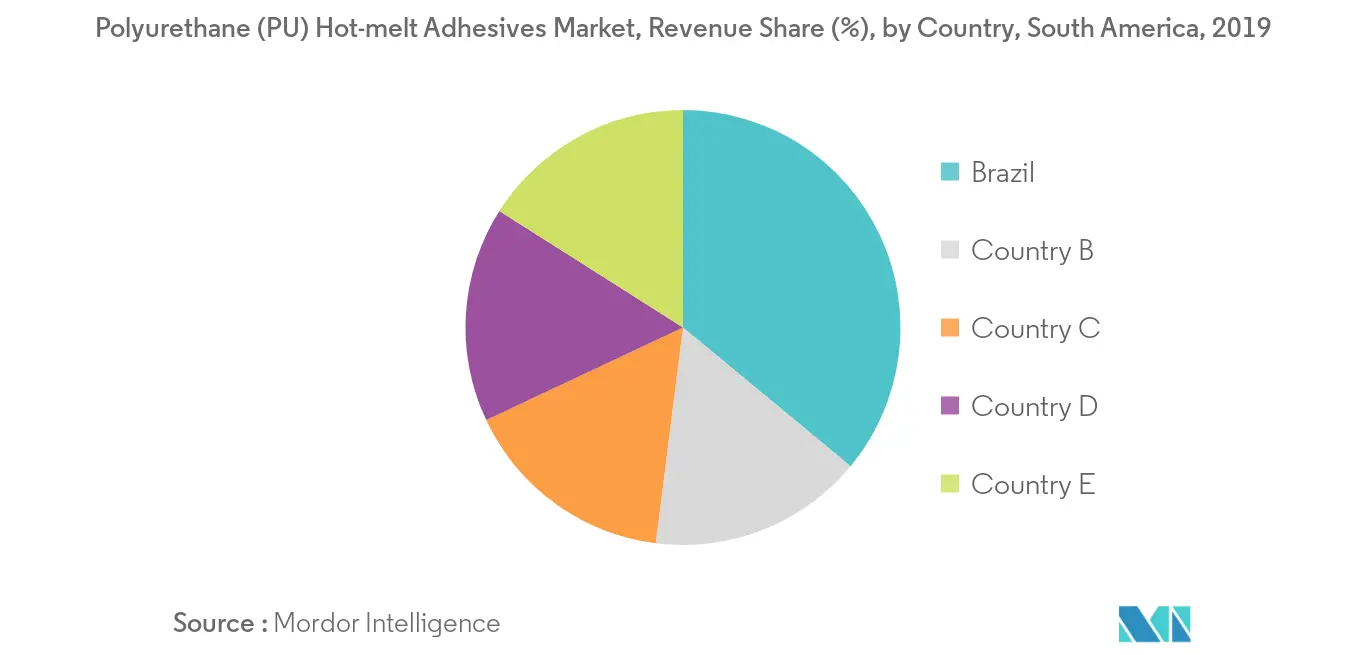Market Trends of South America Polyurethane (PU) Hot-melt Adhesives Industry
This section covers the major market trends shaping the South America Polyurethane (PU) Hot-melt Adhesives Market according to our research experts:
Increasing Demand from Packaging Industry
- Polyurethane hot melts are increasingly used in the production of automotive interior panels. In addition, PU hot-melt adhesives can be used during the manufacturing of car seats, for fixing cables in the roof liner, to bond door sill protectors, and other plastic parts. They can also be used to bond emblems, as well as anchor plates onto gear knobs.
- A wide variety of different assembly bonds are required. Retainer bonding, the bonding of the steel frames of the sunroofs, window tracks etc. Different materials, such as, plastics, metals, lacquers, textiles, and wood- based materials can be bonded securely. The quick cooling of the applied adhesive allows short set times, and the subsequent chemical crosslinking with the aid of moisture, guarantees high temperature, and climate resistance. Even at low temperatures, these hot melts prove to be flexible and tend not to brittle. The adhesive bead cuts off cleanly without stringing, therefore avoiding contamination of the decor area, when the hot melt is applied robotically.
- These adhesive systems are also more frequently used for lamination applications. The adhesive can be applied economically with new application technology. When using holt-melt adhesives, the 100% solids are being applied, as compared to the use of dispersion adhesives (which ensures maximum efficiency of adhesive consumption). Complex and cost-intensive drying processes of the adhesive film can be avoided.
- Hot-melt PUR are used in road atlases on the back shelf of a car, as they can withstand extreme temperatures.
- The aforementioned factors have been boosting the demand for polyurethane hot-melt adhesives, in the recent times.

Brazil to Dominate the Market
- Brazil is the third largest domestic aviation market globally with 6 of the 10 busiest airports in the region.
- In addition to this, the country is one of the leading manufacturers of regional and business jets and manufactures a range of aerospace products which includes turboprops, military aircraft, agricultural aircraft, business aircraft, helicopters and other general aviation aircraft.
- The upcoming investments from large automotive companies are expected to drive the demand for PU hot melt adhesives in the country - General Motors (GM) is ongoing USD 4.06 billion investment plan for 2014 to 2020.
- The footwear market in Brazil has been majorly occupied by global apparel and footwear players, which include, Nike, Adidas, Puma, and Geox. The footwear market is majorly driven by cotton consumption, textile consumption, personal disposable income, and the nation's population. The fashion trends and the interlinked designing methods in the nation have been gradually dissolving the difference between fitness wear, sports apparel, active, and casual wear, which have changed the buying behavior of the target audience.
- Owing to all the above-mentioned factors, the market for polyurethane hot-melt adhesives is expected to increase during the forecast period.


